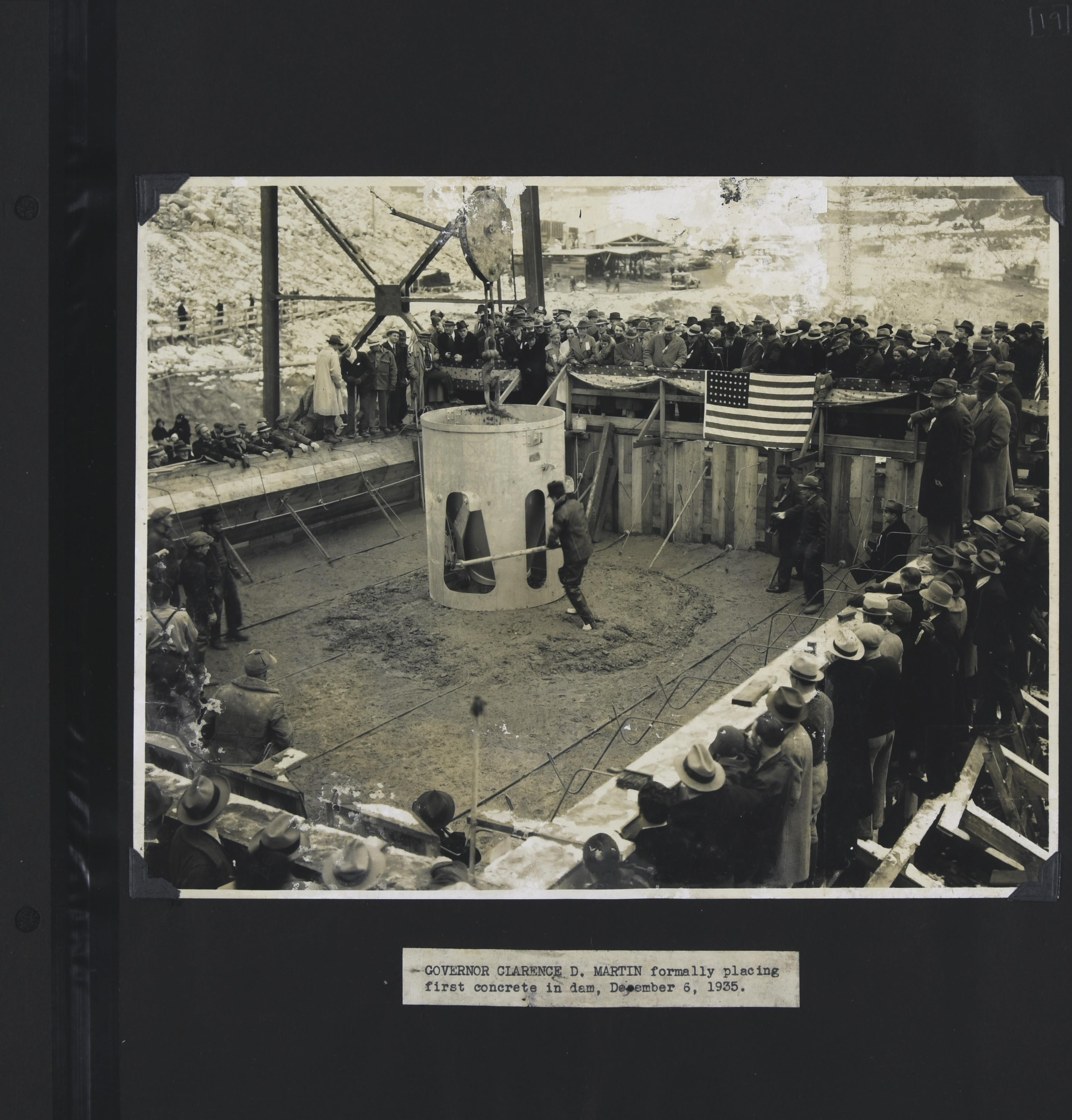Pouring Concrete for the Grand Coulee Dam

The Grand Coulee Dam was one of the largest New Deal projects in Washington. An audacious plan to utilize the Columbia River to produce electricity and provide irrigation for Washington farmland; the dam took eight years to complete, using over twelve million cubic yards of concrete. During World War Two the electricity generated by the Grand Coulee powered the production of Boeing’s aircraft, one-third of the nation’s aluminum, and the Hanford Nuclear Site. The dam also ended the annual salmon migration to the rivers above the site which had fed the Native Americans on the northern plateau for thousands of years. This scrapbook created by the Columbia Basin Commission records the construction of the Grand Coulee Dam through a series of photographs. Taken from 1933 to 1941 photos show workers pouring concrete, and jackhammering the steep rocks behind the dam site. The 1935 visit of President Franklin Delano Roosevelt is also pictured. The 52-page scrapbook is a behind the scenes look at the creation of one of the largest man-made structures in the world.
To view more photographs like this one see The Grand Coulee Dam, Columbia Basin Project [Scrapbook], 1935-1941.
Written by Brianna Humphreys

